December 7, 2021
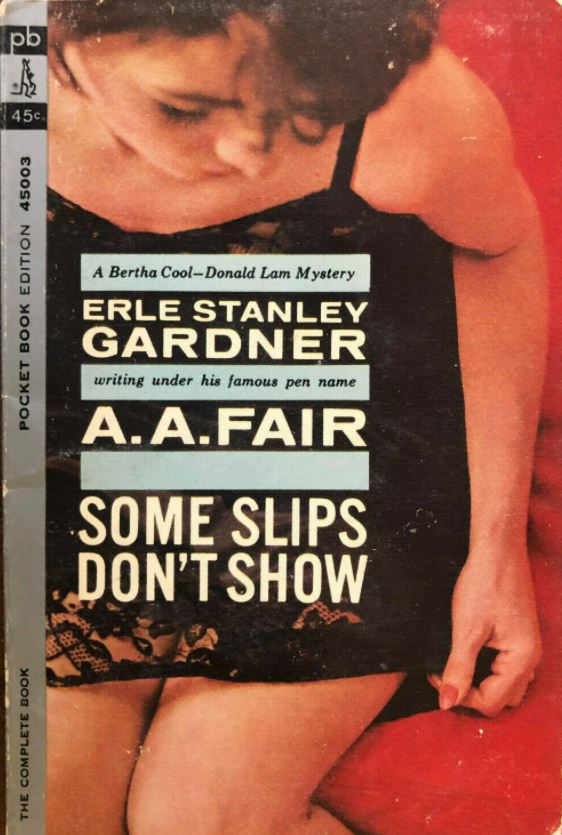 I have had enough A.A. Fair Cocktail Talks and Erle Stanley Gardner Cocktail Talks on the ol’ Spiked Punch for those that don’t know to now know they are the same person, right? Well, the latter, Mr. Erle, is the person I suppose, and the former, Mr. A.A., just a nom de plume (as they say), but I like to hope he at least wore different hats when writing as different people. Anyway, I’ve had a fair (haha!) enough amount of Cocktail Talks as mentioned for you to go back through them to browse my thoughts on the two personas, on the books written by them, and my feelings therein. So, don’t miss that! Cause I’m not going to go over it all here, instead want to jump right in to the drink-y quotes from this book, Some Slips Don’t Show, which stars (as all the A.A. Fair books, I believe) detective Donald Lam, and to a lesser extent, his partner Bertha Cool. In this yarn, they end up with a client who isn’t completely sure if he cheated on his wife while in San Francisco, but may be being blackmailed. Curious! And then there is a murder, and some art, and a modern lady beguiled by the diminutive (in height, somewhat, but not in smarts or stick-tuitive-ness) and dashing Donald, as ladies tend to be. But before said beguiling, there’s background around the client, who it seems had himself a night.
I have had enough A.A. Fair Cocktail Talks and Erle Stanley Gardner Cocktail Talks on the ol’ Spiked Punch for those that don’t know to now know they are the same person, right? Well, the latter, Mr. Erle, is the person I suppose, and the former, Mr. A.A., just a nom de plume (as they say), but I like to hope he at least wore different hats when writing as different people. Anyway, I’ve had a fair (haha!) enough amount of Cocktail Talks as mentioned for you to go back through them to browse my thoughts on the two personas, on the books written by them, and my feelings therein. So, don’t miss that! Cause I’m not going to go over it all here, instead want to jump right in to the drink-y quotes from this book, Some Slips Don’t Show, which stars (as all the A.A. Fair books, I believe) detective Donald Lam, and to a lesser extent, his partner Bertha Cool. In this yarn, they end up with a client who isn’t completely sure if he cheated on his wife while in San Francisco, but may be being blackmailed. Curious! And then there is a murder, and some art, and a modern lady beguiled by the diminutive (in height, somewhat, but not in smarts or stick-tuitive-ness) and dashing Donald, as ladies tend to be. But before said beguiling, there’s background around the client, who it seems had himself a night.
She laughed a throaty, musical laugh. “Trying to play the big, bad wolf was pretty much of a strain on him. He was out of character.”
“I can imagine,” I said. “What happened?”
“He started drinking Champagne like water on top of some fruit punch. The combination didn’t agree with him.”
“So, what happened?”
“He went to the bathroom.”
“Then what?”
“Do you have to know all the details?”
–A.A. Fair, Some Slips Don’t Show
Tags: A.A. Fair, Bertha Cool, Champagne, Cocktail Talk, Cool and Lam, Donald Lam, Erle Stanley Gardner, Part I, Some Slips Don’t Show, sparkling wine
Posted in: Champagne & Sparkling Wine, Cocktail Talk
November 16, 2021
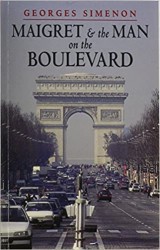 I’m back into another George Simenon yarn starring Parisian Inspector Maigret (there have been many Maigret Cocktail Talks you can browse at will), an ideal read for a rainy November day, as during a fair part of Maigret and the Man on the Boulevard Paris is engulfed in heavy rains. And our stolid, stoic, Chief Inspector (to give him his full due) moves along through the wet and dry and cloudy days in his own particular way: slow at times, thoughtful at times, dreamy (can I say that? I did!) at times, but always pushing forward. His case this time involves the murder of a man who had a second-life of sorts, pointed out first by the fact that he was murdered wearing light brown shoes, shoes which his wife swears he didn’t own, and which Maigret calls “goose-dung” shoes, due to the color. That’s amazing! Maigret follows the various threads, spooling them up one-by-one, while stopping for various sips along the way: wine, Calvados, aperitives, more, maybe even more than usual (one of the many reasons I love Maigret so much is his love of bars, bistros, brasseries, and other eating-and-watering holes. Even when they are around-the-corner, as in the below).
I’m back into another George Simenon yarn starring Parisian Inspector Maigret (there have been many Maigret Cocktail Talks you can browse at will), an ideal read for a rainy November day, as during a fair part of Maigret and the Man on the Boulevard Paris is engulfed in heavy rains. And our stolid, stoic, Chief Inspector (to give him his full due) moves along through the wet and dry and cloudy days in his own particular way: slow at times, thoughtful at times, dreamy (can I say that? I did!) at times, but always pushing forward. His case this time involves the murder of a man who had a second-life of sorts, pointed out first by the fact that he was murdered wearing light brown shoes, shoes which his wife swears he didn’t own, and which Maigret calls “goose-dung” shoes, due to the color. That’s amazing! Maigret follows the various threads, spooling them up one-by-one, while stopping for various sips along the way: wine, Calvados, aperitives, more, maybe even more than usual (one of the many reasons I love Maigret so much is his love of bars, bistros, brasseries, and other eating-and-watering holes. Even when they are around-the-corner, as in the below).
“Where to now chief?”
It was just eleven o’clock.
“Stop at the first bistro you come to.”
“There’s one next door to the shop.”
Somehow, he felt shy of going in there, under Leone’s watchful eye.
“We’ll find one round the corner.”
He wanted to ring Monsieur Kaplan, and to consult the street guide, to find Monsieur Saimbron’s exact address on the Quai de la Megisserie.
While he was there, having started the day with a Calvados, he thought he might as well have another, and drank it standing at the bar counter.
–George Simenon, Maigret and the Man on the Boulevard
October 5, 2021
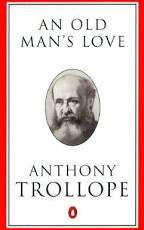 First published in 1884, An Old Man’s Love was the last novel completed by the Spiked Punch’s pal Anthony Trollope, published after his death (there’s one more unfinished novel, too – oh, and check out all the Trollope Cocktail Talks to learn more, in an overall way, while having oodles of reading fun), and also one of the few novels by him that I’d yet to read, until recently! It’s a short novel, and almost could have slipped into novella size, though I’d hate to miss all but a few of his last words. I wouldn’t put it into the super-awesome tier of Trollope, as it’s fairly one-path’d as opposed to his thicker, more layered pieces. But it’s a good study of just what the title would have you believe: an older gentleman falls for his younger ward and nearly marries her – but then a past love of her’s shows up, and stuff ensues, as you’d expect. There are a few other pertinent characters, including the old man’s (Mr. Whittlestaff, that is), housekeeper, with whom he has some funny exchanges, and her drunken reprobate of an estranged husband. The latter is featured in the below quote, which itself also features one of my favorite phrases, “drunk as a lord.” This phrase usage is really why the below makes it to Cocktail Talk status. Drunk as a lord! I’ve been there, my friends.
First published in 1884, An Old Man’s Love was the last novel completed by the Spiked Punch’s pal Anthony Trollope, published after his death (there’s one more unfinished novel, too – oh, and check out all the Trollope Cocktail Talks to learn more, in an overall way, while having oodles of reading fun), and also one of the few novels by him that I’d yet to read, until recently! It’s a short novel, and almost could have slipped into novella size, though I’d hate to miss all but a few of his last words. I wouldn’t put it into the super-awesome tier of Trollope, as it’s fairly one-path’d as opposed to his thicker, more layered pieces. But it’s a good study of just what the title would have you believe: an older gentleman falls for his younger ward and nearly marries her – but then a past love of her’s shows up, and stuff ensues, as you’d expect. There are a few other pertinent characters, including the old man’s (Mr. Whittlestaff, that is), housekeeper, with whom he has some funny exchanges, and her drunken reprobate of an estranged husband. The latter is featured in the below quote, which itself also features one of my favorite phrases, “drunk as a lord.” This phrase usage is really why the below makes it to Cocktail Talk status. Drunk as a lord! I’ve been there, my friends.
On the next morning, when John Gordon reached the corner of the road at which stood Croker’s Hall, he met, outside on the roadway, close to the house, a most disreputable old man with a wooden leg and a red nose. This was Mr. Baggett, or Sergeant Baggett as he was generally called, and was now known about all Alresford to be the husband of Mr. Whittlestaff’s housekeeper. For news had got abroad, and tidings were told that Mr. Baggett was about to arrive in the neighbourhood to claim his wife. Everybody knew it before the inhabitants of Croker’s Hall. And now, since yesterday afternoon, all Croker’s Hall knew it, as well as the rest of the world. He was standing there close to the house, which stood a little back from the road, between nine and ten in the morning, as drunk as a lord. But I think his manner of drunkenness was perhaps in some respects different from that customary with lords. Though he had only one leg of the flesh, and one of wood, he did not tumble down, though he brandished in the air the stick with which he was accustomed to disport himself. A lord would, I think, have got himself taken to bed. But the Sergeant did not appear to have any such intention.
— Anthony Trollope, An Old Man’s Love
August 31, 2021
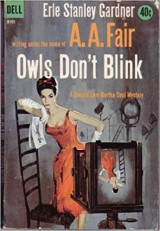 This may be one of the weirdest Cocktail Talks ever! Boom! If you’ve read past Erle Stanley Gardner Cocktail Talks, and you should, you’ll already know that I lean towards liking his books written under the pseudonym A.A. Fair (the Donald Lam-Bertha Cool mysteries) better than his more famous Perry Mason books (though as I age, I’ve found more of those I like a little more than expected, too), so that’s not weird. The book has a fair number of twists and turns and unexpectedness happening for PI Lam and jolly moments from PI Cool, with more of the former, but that’s all expected in these yarns, so not weird at all. Though ending in LA, much of the book (which was pubbed in 1942) takes place in lovely New Orleans, and that’s where the weirdness happens. See, I’d expect as a famous writer, and as one fairly meticulous usually, Mr. Gardner would have actually visited that fair city, and spent time on the streets and in the bars and restaurants before writing this book – and had some of the city’s legendary cocktails and highballs and such. And there are many classic libations that trace their histories back to New Orleans! However, when a scene takes place in a bar and PI Lam is ordering drinks, his list of “New Orleans drinks” is bafflingly, oh, boring? Un-New-Orleans-y? Weird? To me, weird. Maybe there was a time in the 40s that people thought of the below as New Orleans drinks? I’m glad it’s not now! But the below Cocktail Talk is still worthy – weird can be fun, too.
This may be one of the weirdest Cocktail Talks ever! Boom! If you’ve read past Erle Stanley Gardner Cocktail Talks, and you should, you’ll already know that I lean towards liking his books written under the pseudonym A.A. Fair (the Donald Lam-Bertha Cool mysteries) better than his more famous Perry Mason books (though as I age, I’ve found more of those I like a little more than expected, too), so that’s not weird. The book has a fair number of twists and turns and unexpectedness happening for PI Lam and jolly moments from PI Cool, with more of the former, but that’s all expected in these yarns, so not weird at all. Though ending in LA, much of the book (which was pubbed in 1942) takes place in lovely New Orleans, and that’s where the weirdness happens. See, I’d expect as a famous writer, and as one fairly meticulous usually, Mr. Gardner would have actually visited that fair city, and spent time on the streets and in the bars and restaurants before writing this book – and had some of the city’s legendary cocktails and highballs and such. And there are many classic libations that trace their histories back to New Orleans! However, when a scene takes place in a bar and PI Lam is ordering drinks, his list of “New Orleans drinks” is bafflingly, oh, boring? Un-New-Orleans-y? Weird? To me, weird. Maybe there was a time in the 40s that people thought of the below as New Orleans drinks? I’m glad it’s not now! But the below Cocktail Talk is still worthy – weird can be fun, too.
We had no more than seated her when the waiter came up for an order.
“Plain whiskey and water,” she said.
“Gin and Coke,” I ordered.
Hale pursed his lips thoughtfully. “Well, let me see. Do you have any really good Cognac?”
I answered for the waiter. “No,” I said. “Since you’re here in New Orleans, why not drink a New Orleans drink? Gin and Seven-Up; Gin and Coke; rum and Coke; or bourbon and Seven-Up?”
–Erle Stanley Gardner (writing as A.A. Fair), Owls Don’t Blink
Tags: A.A. Fair, Bertha Cool, bourbon and Seven-Up, Cocktail Talk, Cognac, Donald Lam, Erle Stanley Gardner, Gin, Gin and Coke, Gin and Seven-Up, Owls Don’t Blink, Part I, Rum, rum and Coke, Whiskey
Posted in: Cocktail Talk, Cognac, Gin, Rum, Whiskey
February 16, 2021
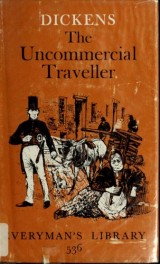 The Uncommercial Traveller by our pal Charles Dickens is not a book one hears about enough – heck, even a Dickens head like me hadn’t had it in his hands until recently. But I scored a copy, which isn’t really that hard, though said copy is like a print-to-order thing, with no, like TOC, or copyright notes, or title page, anything. Which is fine, and definitely better than no copy at all! If you don’t know (and I’ll admit, I didn’t know much until I got said copy), The Uncommercial Traveller is a collection of personal essays, or literary sketches as they say, that Dickens originally published in a journal he founded called “All the Year Round” (if anyone wants to gift me a few original copies of that, go right ahead), and really involves the main character (Dickens, that is, as far as it goes) writing about his wanderings around London, the UK, and (in a dreamy sort-of way and regular ways) Europe, including visiting the site of a famous shipwreck, strolling the city in the wee hours due to insomnia, mapping out the haunts of neighborhood dogs, visiting the town he grew up in, and more. They are all written in the Dickensian style, with wit, insights that remain relevant today, details rendered through his particular peculiar eye, and all. He stops at pubs and hotels and other watering holes, too, as he loved such, and drinks, so it makes for good Cocktail Talk-ing (oh, don’t miss all the past Charles Dickens Cocktail Talks, as there are many jolly ones). I’m not sure yet how many Uncommercial Traveller Cocktails Talks I’ll have yet, but you can bet they’ll be more! We’re going to start at one of those neighborhood public houses, one attended by theatre-goers during intermission. And while it does have drinks! It’s really an ode to the sandwich. But I love sandwiches! Especially with drinks.
The Uncommercial Traveller by our pal Charles Dickens is not a book one hears about enough – heck, even a Dickens head like me hadn’t had it in his hands until recently. But I scored a copy, which isn’t really that hard, though said copy is like a print-to-order thing, with no, like TOC, or copyright notes, or title page, anything. Which is fine, and definitely better than no copy at all! If you don’t know (and I’ll admit, I didn’t know much until I got said copy), The Uncommercial Traveller is a collection of personal essays, or literary sketches as they say, that Dickens originally published in a journal he founded called “All the Year Round” (if anyone wants to gift me a few original copies of that, go right ahead), and really involves the main character (Dickens, that is, as far as it goes) writing about his wanderings around London, the UK, and (in a dreamy sort-of way and regular ways) Europe, including visiting the site of a famous shipwreck, strolling the city in the wee hours due to insomnia, mapping out the haunts of neighborhood dogs, visiting the town he grew up in, and more. They are all written in the Dickensian style, with wit, insights that remain relevant today, details rendered through his particular peculiar eye, and all. He stops at pubs and hotels and other watering holes, too, as he loved such, and drinks, so it makes for good Cocktail Talk-ing (oh, don’t miss all the past Charles Dickens Cocktail Talks, as there are many jolly ones). I’m not sure yet how many Uncommercial Traveller Cocktails Talks I’ll have yet, but you can bet they’ll be more! We’re going to start at one of those neighborhood public houses, one attended by theatre-goers during intermission. And while it does have drinks! It’s really an ode to the sandwich. But I love sandwiches! Especially with drinks.
Between the pieces, we almost all of us went out and refreshed. Many of us went the length of drinking beer at the bar of the neighbouring public-house, some of us drank spirits, crowds of us had sandwiches and ginger-beer at the refreshment-bars established for us in the Theatre. The sandwich—as substantial as was consistent with portability, and as cheap as possible—we hailed as one of our greatest institutions. It forced its way among us at all stages of the entertainment, and we were always delighted to see it; its adaptability to the varying moods of our nature was surprising; we could never weep so comfortably as when our tears fell on our sandwich; we could never laugh so heartily as when we choked with sandwich; Virtue never looked so beautiful or Vice so deformed as when we paused, sandwich in hand, to consider what would come of that resolution of Wickedness in boots, to sever Innocence in flowered chintz from Honest Industry in striped stockings. When the curtain fell for the night, we still fell back upon sandwich, to help us through the rain and mire, and home to bed.
–Charles Dickens, The Uncommercial Traveller
Tags: bars public house, beer, Charles Dickens, Cocktail Talk, Dickens, ginger beer, Part I, sandwich, spirits, The Uncommercial Traveller
Posted in: Bars, beer, Charles Dickens, Cocktail Talk
December 29, 2020
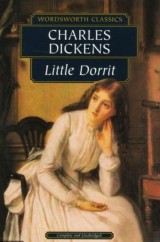 I can’t believe it’s the end of 2020 (a crappy year, as you know, with some redeeming factors), which means there have been, well, 2,020 years plus a few more years of recorded Western history (I’m not here to debate history, and realize I’m generalizing in a big way, but hey, I write about drinks), and in all those years I haven’t had a Cocktail Talk from the immortal Dicken’s classic Little Dorrit! That’s an outrage! What have I been thinking? I haven’t, obviously. While Little Dorrit isn’t my all-time favorite Dickens, it’s definitely in the middle-high range, and as I love most all Dickens books a heck of a lot, that’s saying something! Be sure to read all the Dickens Cocktail Talks to hear more. But be sure to come back, too, cause you don’t want to miss these quotes from Dickens fairly-dark novel that’s unflinching in its views of his society (which is remarkably like ours, in some sad ways), while still being wonderfully comic, character-driven, lyric, and descriptive, with layers of stories that disconnect and then connect again and characters you won’t easily forget. Dickens! And, of course, there are some drinks, as he liked drinks and pubs like few other authors. Our first Little Dorrit Cocktail Talk – and there will be more, don’t you fret – features the hero (in a way of speaking) of the book, Arthur Clennam, sitting down for dinner with a now-much-changed love from his youth, and with her father.
I can’t believe it’s the end of 2020 (a crappy year, as you know, with some redeeming factors), which means there have been, well, 2,020 years plus a few more years of recorded Western history (I’m not here to debate history, and realize I’m generalizing in a big way, but hey, I write about drinks), and in all those years I haven’t had a Cocktail Talk from the immortal Dicken’s classic Little Dorrit! That’s an outrage! What have I been thinking? I haven’t, obviously. While Little Dorrit isn’t my all-time favorite Dickens, it’s definitely in the middle-high range, and as I love most all Dickens books a heck of a lot, that’s saying something! Be sure to read all the Dickens Cocktail Talks to hear more. But be sure to come back, too, cause you don’t want to miss these quotes from Dickens fairly-dark novel that’s unflinching in its views of his society (which is remarkably like ours, in some sad ways), while still being wonderfully comic, character-driven, lyric, and descriptive, with layers of stories that disconnect and then connect again and characters you won’t easily forget. Dickens! And, of course, there are some drinks, as he liked drinks and pubs like few other authors. Our first Little Dorrit Cocktail Talk – and there will be more, don’t you fret – features the hero (in a way of speaking) of the book, Arthur Clennam, sitting down for dinner with a now-much-changed love from his youth, and with her father.
Once upon a time Clennam had sat at that table taking no heed of anything but Flora; now the principal heed he took of Flora was to observe, against his will, that she was very fond of porter, that she combined a great deal of sherry with sentiment, and that if she were a little overgrown, it was upon substantial grounds. The last of the Patriarchs had always been a mighty eater, and he disposed of an immense quantity of solid food with the benignity of a good soul who was feeding some one else.
— Charles Dickens, Little Dorrit
Tags: Arthur Clennam, Charles Dickens, Cocktail Talk, Little Dorrit, Part I, port, she combined a great deal of sherry with sentiment, sherry
Posted in: beer, Charles Dickens, Cocktail Talk, Sherry
November 24, 2020
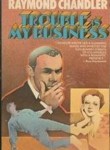 We’re still taking our fall tour along Raymond Chandler lane (don’t miss the “Trouble Is My Business” Part I and Part II Cocktail Talks), with Raymond Chandler of course, and have now made it to Seattle – which, coincidentally, is where I tend to sometimes hang my hat. So, as you can imagine, when I read the story “Goldfish,” in the book Trouble Is My Business and Other Stories, and Chandler’s PI Philip Marlowe ended up heading to Seattle, WA, well, I was tickled. And then they drank apple brandy! And then fish, and before that a mystery long-told, and I won’t want to say anymore cause you need to read the story – if I haven’t sold it, this quote will.
We’re still taking our fall tour along Raymond Chandler lane (don’t miss the “Trouble Is My Business” Part I and Part II Cocktail Talks), with Raymond Chandler of course, and have now made it to Seattle – which, coincidentally, is where I tend to sometimes hang my hat. So, as you can imagine, when I read the story “Goldfish,” in the book Trouble Is My Business and Other Stories, and Chandler’s PI Philip Marlowe ended up heading to Seattle, WA, well, I was tickled. And then they drank apple brandy! And then fish, and before that a mystery long-told, and I won’t want to say anymore cause you need to read the story – if I haven’t sold it, this quote will.
“Too early for apple brandy, ain’t it?” he whispered.
I told him how wrong he was. He went away again and came back with glasses and a quart of clear amber fluid. He sat down with me and poured. A rich baritone voice in the kitchen was singing “Chloe,” over the sizzling.
We clinked glasses and drank and waited for the heat to crawl up our spines.
“Stranger, ain’t you?” the little man asked.
I said I was.
“From Seattle maybe? That’s a nice piece of goods you got on.”
“Seattle,” I agreed.
— Raymond Chandler, “Goldfish”
August 11, 2020
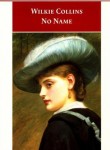 First published in serial form in 1862/1863, No Name is not the book name (see what I did there!) that first pops up when one thinks of Mr. Wilkie Collins; instead, it’s The Moonstone, and then The Woman in White. Both of which have also had recent television adaptions. It makes some sense, too, especially as The Moonstone is in many ways arguably (gently, cause there is no need for a ruckus) the first, or one of the first, detective novels, kicking off a massive industry, and The Woman in White has a little of that action, too. However! Collins wrote many more novels, some good, some not as good, and strongly in the good column is No Name. It had been, maybe, twenty-odd years since I read this the first time, and on the second reading recently I was struck by just how good it is, and left wondering why more haven’t taken it up. It has, as you might expect, a fair dollop of Victorian melodramatics – meaning, lots of cliff’s edges or “oh that didn’t happen” ramped up moments, like a silent movie in a way, or like a fair amount of modern movies now that I think about it – and gets wordy at over 500 pages. But the story/stories of two sisters (Magdalen and Norah Vanstone) abandoned when their parents die, and left none of their inheritance due to the ridiculous legality of the times, and how they deal with it and the loss of standing and fortune (not to mention grief, degradation, all that) is done quite well, and gives us a heroine (Magdalen) that many readers at the time weren’t fond of, but which I quite liked in her “do whatever it takes” and “I’m not going to sit in a place others tell me to” attitude. It could, I think, also make a swell miniseries! Plus, it was Collins’ pal Charles Dickens favorite (of the Collins canon), and has a couple nearly Dickensian characters, including the rascally Captain Wragge, and his nemesis, the calculating Mrs. Lecount, who below gives us – along with cruel fool Noah Vanstone – our first of three Cocktail Talks from the book.
First published in serial form in 1862/1863, No Name is not the book name (see what I did there!) that first pops up when one thinks of Mr. Wilkie Collins; instead, it’s The Moonstone, and then The Woman in White. Both of which have also had recent television adaptions. It makes some sense, too, especially as The Moonstone is in many ways arguably (gently, cause there is no need for a ruckus) the first, or one of the first, detective novels, kicking off a massive industry, and The Woman in White has a little of that action, too. However! Collins wrote many more novels, some good, some not as good, and strongly in the good column is No Name. It had been, maybe, twenty-odd years since I read this the first time, and on the second reading recently I was struck by just how good it is, and left wondering why more haven’t taken it up. It has, as you might expect, a fair dollop of Victorian melodramatics – meaning, lots of cliff’s edges or “oh that didn’t happen” ramped up moments, like a silent movie in a way, or like a fair amount of modern movies now that I think about it – and gets wordy at over 500 pages. But the story/stories of two sisters (Magdalen and Norah Vanstone) abandoned when their parents die, and left none of their inheritance due to the ridiculous legality of the times, and how they deal with it and the loss of standing and fortune (not to mention grief, degradation, all that) is done quite well, and gives us a heroine (Magdalen) that many readers at the time weren’t fond of, but which I quite liked in her “do whatever it takes” and “I’m not going to sit in a place others tell me to” attitude. It could, I think, also make a swell miniseries! Plus, it was Collins’ pal Charles Dickens favorite (of the Collins canon), and has a couple nearly Dickensian characters, including the rascally Captain Wragge, and his nemesis, the calculating Mrs. Lecount, who below gives us – along with cruel fool Noah Vanstone – our first of three Cocktail Talks from the book.
“The man has been drinking, sir,” said Mrs. Lecount. “It is easy to see and to smell that. But he is evidently used to drinking. If he is sober enough to walk quite straight–which he certainly does–and to sign his name in an excellent handwriting–which you may see for yourself on the Will–I venture to think he is sober enough to drive us to Dumfries.”
“Nothing of the sort! You’re a foreigner, Lecount; you don’t understand these people. They drink whisky from morning to night. Whisky is the strongest spirit that’s made; whisky is notorious for its effect on the brain. I tell you, I won’t run the risk. I never was driven, and I never will be driven, by anybody but a sober man.”
–Wilkie Collins, No Name
 I have had enough A.A. Fair Cocktail Talks and Erle Stanley Gardner Cocktail Talks on the ol’ Spiked Punch for those that don’t know to now know they are the same person, right? Well, the latter, Mr. Erle, is the person I suppose, and the former, Mr. A.A., just a nom de plume (as they say), but I like to hope he at least wore different hats when writing as different people. Anyway, I’ve had a fair (haha!) enough amount of Cocktail Talks as mentioned for you to go back through them to browse my thoughts on the two personas, on the books written by them, and my feelings therein. So, don’t miss that! Cause I’m not going to go over it all here, instead want to jump right in to the drink-y quotes from this book, Some Slips Don’t Show, which stars (as all the A.A. Fair books, I believe) detective Donald Lam, and to a lesser extent, his partner Bertha Cool. In this yarn, they end up with a client who isn’t completely sure if he cheated on his wife while in San Francisco, but may be being blackmailed. Curious! And then there is a murder, and some art, and a modern lady beguiled by the diminutive (in height, somewhat, but not in smarts or stick-tuitive-ness) and dashing Donald, as ladies tend to be. But before said beguiling, there’s background around the client, who it seems had himself a night.
I have had enough A.A. Fair Cocktail Talks and Erle Stanley Gardner Cocktail Talks on the ol’ Spiked Punch for those that don’t know to now know they are the same person, right? Well, the latter, Mr. Erle, is the person I suppose, and the former, Mr. A.A., just a nom de plume (as they say), but I like to hope he at least wore different hats when writing as different people. Anyway, I’ve had a fair (haha!) enough amount of Cocktail Talks as mentioned for you to go back through them to browse my thoughts on the two personas, on the books written by them, and my feelings therein. So, don’t miss that! Cause I’m not going to go over it all here, instead want to jump right in to the drink-y quotes from this book, Some Slips Don’t Show, which stars (as all the A.A. Fair books, I believe) detective Donald Lam, and to a lesser extent, his partner Bertha Cool. In this yarn, they end up with a client who isn’t completely sure if he cheated on his wife while in San Francisco, but may be being blackmailed. Curious! And then there is a murder, and some art, and a modern lady beguiled by the diminutive (in height, somewhat, but not in smarts or stick-tuitive-ness) and dashing Donald, as ladies tend to be. But before said beguiling, there’s background around the client, who it seems had himself a night.



























